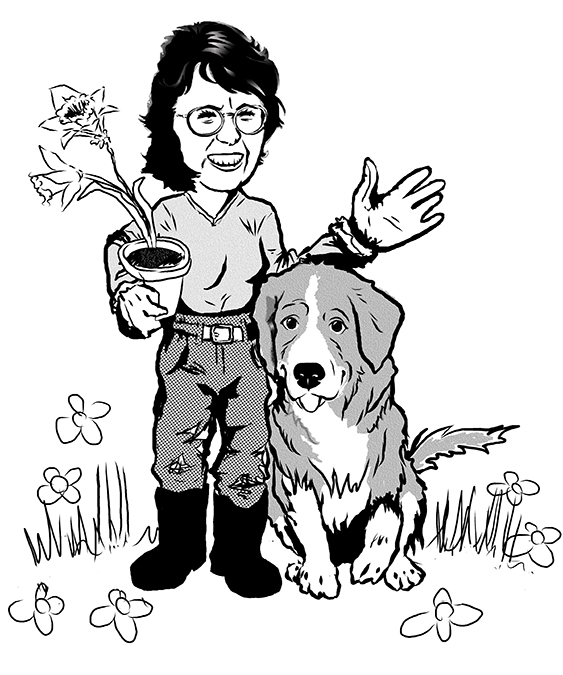by Leslie Cox; Sunday; October 22, 2017
 Aarrrggghhh! Pear slugs in the pear tree! Don’t know how I missed them…except there are a lot of leaves on this tree and it is rather tall. Also…it is amazing how well these little slithery-looking pests blend into the tree canopy even though they are black in colour. My eyes have passed over them on a first pass, general look-for search…only to pinpoint some of the varmints on a second scan.
Aarrrggghhh! Pear slugs in the pear tree! Don’t know how I missed them…except there are a lot of leaves on this tree and it is rather tall. Also…it is amazing how well these little slithery-looking pests blend into the tree canopy even though they are black in colour. My eyes have passed over them on a first pass, general look-for search…only to pinpoint some of the varmints on a second scan.
I really must make a note on my Spring Garden Chore List to start checking the chokeberry shrub (see note*) and pear tree at the beginning of May for the first generation of this pest. Disposing of as many as possible early in the season will lessen…if not eradicate…the leaf damage from the second pear slug generation which does the most damage. (For more information about the pear slug, click on the link here.)
 Also in the pear tree…I noticed some leaves with pear trellis rust which were missed from an earlier pick to eradicate this disease from blossoming. You do not want to leave these diseased leaves on the tree…although truthfully, given the spores can travel on the wind for 4 – 6 miles (6.5 – 10 km), it can be hard to avoid this disease. Thankfully, it does not kill the tree.
Also in the pear tree…I noticed some leaves with pear trellis rust which were missed from an earlier pick to eradicate this disease from blossoming. You do not want to leave these diseased leaves on the tree…although truthfully, given the spores can travel on the wind for 4 – 6 miles (6.5 – 10 km), it can be hard to avoid this disease. Thankfully, it does not kill the tree.
This rust species is heteroecious…needing two host plants, juniper and pear, to complete its life cycle. The spores overwinter in a gall often near the branch tip of a juniper tree or shrub. When the warmer, wet weather begins in spring, spores are enticed to ooze from the gall, forming an orange-coloured jelly-like substance. When timing is right, the wind picks up these spores and carries them to a secondary host pear tree in the neighbourhood.
Landing on the young pear leaves, the spores settle in and start developing. First, you will notice small yellowish-orange spots which will increase in size over several weeks, gradually morphing to a reddish-orange colour. Look closely and you will see tiny black dots in the coloured area. These are new fruiting structures called pycnia.
 From these pycnia, brown-coloured miniature acorn-like growths will form on the underside of the infected leaf later in the summer. These are called aecia, and this is where more spores (called aeciospores) are formed for release to the wind in August and September.
From these pycnia, brown-coloured miniature acorn-like growths will form on the underside of the infected leaf later in the summer. These are called aecia, and this is where more spores (called aeciospores) are formed for release to the wind in August and September.
You got it! These aeciospores then float on the breeze until they come into contact with a juniper tree where they can set down and form their overwintering gall on the branch tip. It is a vicious circle. (Read more about pear trellis rust, Gymnosporangium sabinae, here.)
On another front…a ton of chestnuts came down out of the tree in the wind we had earlier this week. The lawn and garden beds were positively littered with them. I did manage to rake most of them out of the beds and lawn into a pile after the wind died down but the rain started up again and forced me indoors. It was time to start dinner anyways. Unfortunately, between rain squalls and other stuff on my calendar, I have yet to get back out there to scoop the chestnuts into a bucket for the burn pile.
 Before you ask…these chestnuts are not the edible ones. Nor are they suitable material for the compost bins. The seeds, or nuts, from Aesculus hippocastanum are positively the best germinators I have seen. Hazarding a guess, I estimate roughly eighty percent of the nuts will germinate into a young tree. Do you have any idea how many nuts a chestnut tree can produce? It is phenomenal! I can easily gather 16 – 20 five gallon (19 L) bucket-loads of chestnuts every fall.
Before you ask…these chestnuts are not the edible ones. Nor are they suitable material for the compost bins. The seeds, or nuts, from Aesculus hippocastanum are positively the best germinators I have seen. Hazarding a guess, I estimate roughly eighty percent of the nuts will germinate into a young tree. Do you have any idea how many nuts a chestnut tree can produce? It is phenomenal! I can easily gather 16 – 20 five gallon (19 L) bucket-loads of chestnuts every fall.
Honestly, this tree is lucky it produces a wonderful cooling shade in the heat of the summer…and provides us with great privacy from the road. These two traits alone have saved it from the cut of the saw because I sure curse the volume of nuts!
Stay dry!
*Note: Do not confuse “chokeberry” with “chokecherry”. They are two different plant species.
- Chokeberry refers to the three species in the Aronia genus: arbutifolia (red chokeberry), A. melanocarpa (black chokeberry), and A. prunfolia (purple chokeberry).
- Chokecherry is Prunus virginiana…also known as western chokecherry, bitter-berry, and Virginia bird-cherry.
